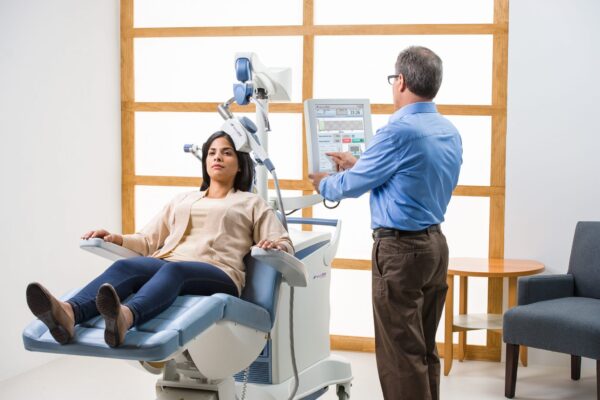Transcranial Magnetic Stimulation (TMS) Therapy offers an alternative method for alleviating the symptoms of severe depression. This non-invasive treatment may also be recommended by your psychiatrist for other mental health conditions. While TMS Therapy is generally safe and well-tolerated, it’s essential to be aware of potential short-term side effects. Here’s what you need to know about some of the most common side effects associated with TMS Therapy.
Managing Headaches After TMS Therapy
It’s not uncommon for some people to experience headaches after a TMS session. This side effect can start soon after treatment begins, often due to the body adjusting to the tapping sensation caused by the magnetic pulses. Interestingly, with regular TMS sessions, these magnetic pulses can actually help reduce the frequency and severity of headaches.
For those who experience mild to moderate headaches, over-the-counter pain relievers can provide relief. Taking a pain reliever about 30 minutes before your therapy session may help prevent discomfort. If headaches persist, your psychiatrist can adjust the intensity of the magnetic pulses. Typically, these headaches are not severe enough to interrupt your treatment schedule.
Scalp Discomfort: A Temporary Inconvenience
During a TMS session, magnetic coils are placed on specific areas of the scalp, which can sometimes cause mild discomfort in those regions. This sensation is usually temporary and can be managed with over-the-counter pain medications. Most people find that any scalp discomfort subsides shortly after the session ends.
Feeling Light-Headed? Here’s What to Expect
On rare occasions, some individuals may feel light-headed or faint during a TMS session. This is more likely to occur in younger patients or those experiencing high levels of anxiety. The sensation might feel like the world is dimming around you, potentially due to the combination of nerve stimulation, anxiety, and a drop in blood pressure.
If you’re prone to anxiety or light-headedness, consider bringing a friend or family member along to your session for support. Distractions like watching TV or listening to music can also help ease these feelings.
Facial Twitching: A Common, Harmless Response
During TMS Therapy, you might notice some twitching in your jaw or eyelid. This is a common response to the brain’s stimulation and can even occur after the session ends. The twitching happens because the magnetic pulses excite the nerves and muscles close to the skin’s surface. While it might feel odd, most people find the sensation tolerable, and it usually fades over time.
Protecting Your Hearing During TMS
The loud sounds produced during TMS Therapy can potentially affect your hearing. To protect your ears, it’s important to wear earplugs during your session. This precaution is not only for the patient but also for anyone else present in the room. Taking these steps significantly reduces the risk of hearing loss.
Monitoring for Signs of Hypomania
Although rare, hypomania can be a side effect of TMS Therapy. During and after treatment, your psychiatrist and the medical team will closely monitor you for any early signs of hypomania, such as increased irritability or restlessness. If these symptoms appear, the treatment will be paused, and you’ll need to follow up with your psychiatrist to manage these effects before resuming therapy.
Seizures: An Uncommon Side Effect
Seizures are an infrequent but possible side effect of TMS Therapy, usually triggered by direct stimulation of nearby brain regions. The excitement from the treatment can spread to the motor cortex, potentially causing a seizure. To mitigate this risk, your psychiatrist will monitor your physical responses, particularly any twitching in your right hand, to ensure that the brain stimulation remains within safe limits.
